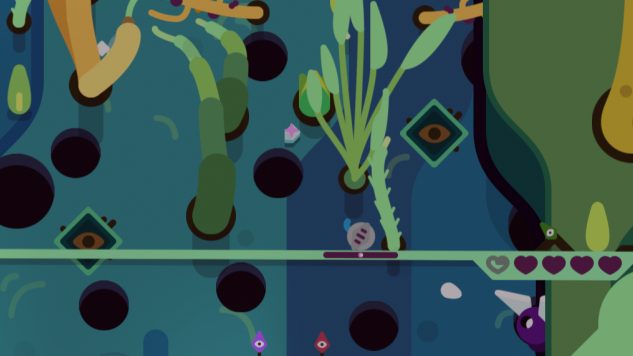The Adorable Tumbleseed Should Turn Down the Difficulty

If you think about it, for such a prominent part of the medium, the current style of independent games isn’t that old. The community as we know it has only been around about fifteen years. In that time, as new distribution platforms and funding options have emerged, commercial artists of all backgrounds have found a new home in the medium, giving birth to a wave of games embracing a whimsical storybook aesthetic over the demanding photorealism of mainstream titles. Night in the Woods, Burly Men at Sea, The Flame in the Flood: these games, and many others have adopted a look once reserved for children’s section at the library and it’s delightfully refreshing. Add to the list Tumbleseed, the debut effort of Chicago-based development studio aeiowu.
Tumbleseed is directly based on Ice Cold Beer, a mechanical arcade game from 1983. Housed in an arcade cabinet similar its videogame peers, Ice Cold Beer tasked the player with balancing a small ball bearing on a metal bar and navigating it through a field of obstacles, controlling either end with a set of joysticks. After spotting Ice Cold Beer in a local Chicago arcade, designer Benedict Fritz decided to take the game virtual, building a prototype in Unity, and from there, he and designer Greg Wohlwend altered it bit by bit, adding new concepts, enemies, artwork, and procedurally generated levels, until Tumbleseed, a game all its own, emerged.
The studio has since added more team members, and Wohlwend, whose previous design work is seen in Threes and Ridiculous Fishing, among others, has shaped the game’s aesthetic into one of its most charming features. In creating a virtual version of the physical arcade classic, the team has secured their goal of becoming a part of Ice Cold Beer’s legacy. But how does Tumbleseed stand on its own?
Like Ice Cold Beer, Tumbleseed features a horizontal bar balancing a small ball (in this case, a small seed). Players must move vertically through the level, carefully rolling the seed past gaping holes, spike traps, and other environmental hazards, while maneuvering around vicious insects and enemies. The seed has a number of power-ups and the player can swap them out as the situation calls, adding an element of strategy to the game.
Tumbleseed is all about patience. Predicting the trajectory of the seed and adjusting the angle of the bar requires quick thinking, and steady fingers. The levels change every time the player restarts, and thus the layout cannot be memorized. They can only anticipate what types of enemies and obstacles may lay ahead based on the environment they’re playing in. The mountain has four separate ecosystems as the seed travels upward, and they offer a change of atmospheric pace as the game progresses. At a distance, the limited number of areas would suggest the game is short, but with the repetition the game’s difficulty demands, they’re actually quite long.
I first played Tumbleseed at PAX West 2016, when the game was not on the Switch, and instead controlled by a joystick. My 13 year old daughter and I both displayed a degree of skill almost immediately and spent the entire 30 minute demo fighting over the controller.
Flash forward to Tumbleseed on Nintendo Switch several months later, and we’re both trying to find something else to play after ragequitting the game within five minutes of each other.








































